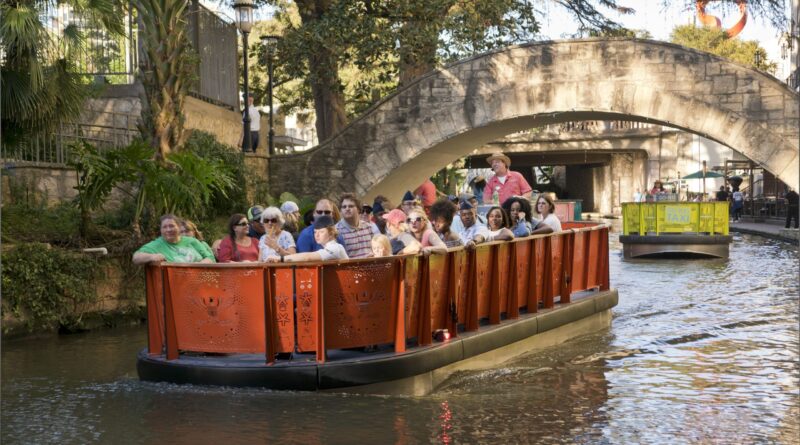The Historic San Antonio River Walk: From Flood Control to Tourist Destination
The cosmopolitan San Antonio River Walk, with its charming cobblestone paths, arched stone bridges, and lively restaurants and bars, forms the vibrant heart of downtown. But few visitors may realize this iconic hub traces its origins to pragmatic engineering and flood control.
The natural San Antonio River has long been integral to the city’s development. Spanish explorers first built the Mission San Antonio de Valero—the Alamo—along its banks in 1718. However, the waterway also frequently flooded the fledgling town, with major inundations in 1819, 1856, 1921 and 1946.
In response, the San Antonio River Authority was created in 1937 to manage flood control and irrigation. The agency hired architect Robert Hugman to re-engineer the downtown river to prevent future flooding. His vision transformed the unruly river into the neatly manicured, walkable canal seen today.
Construction on Hugman’s River Walk began in 1939 under the New Deal-era Works Progress Administration. Over 2,000 laborers excavated and expanded the flood-prone river into a wider, deeper channel lined with limestone walls. 21 street bridges were rebuilt to arch gracefully over the new river channel. Stairways, paths, lush planting and decorative ironwork completed the river’s makeover.
On opening day in 1941, jazz musicians serenaded River Walk visitors. But the new attraction initially failed to draw crowds, especially after World War II rationing curtailed dining out. By the late 1940s, the River Walk risked being paved over for a highway.
Renewed interest in the 1950s saved it from demise. Tourists returned once dining restrictions lifted. Businessman Price Daniel opened Casa Rio restaurant in 1946, launching many riverfront eateries to follow. The river’s first barge tour debuted in 1950, offering boat rides under the colorful neon signs of burgeoning cafes.
Expanding development in the 1960s cemented the River Walk’s purpose beyond flood control. The 1968 HemisFair spotlighted the city globally, bringing new appreciation of its river transformation. Hotels, shops, and nightlife flourished along its banks through the 1970s and 80s.
Several milestone additions expanded the River Walk north and south of downtown. The Paseo del Alamo connected the river to the Alamo in 2009. The Museum Reach completed in 2011 brought public art and ecologically-restored wetlands. The Mission Reach stretch to the Spanish missions opened in 2013.
Today, the River Walk welcomes over 15 million annual visitors as San Antonio’s top attraction. Events like the Fiesta river parade and holiday lights keep its appeal lively year-round. From engineered floodway to vibrant urban playground, the San Antonio River Walk’s rebirth transformed perceptions of the city and cemented its status as a premier Texas destination.
Discover more from City Towner
Subscribe to get the latest posts sent to your email.




